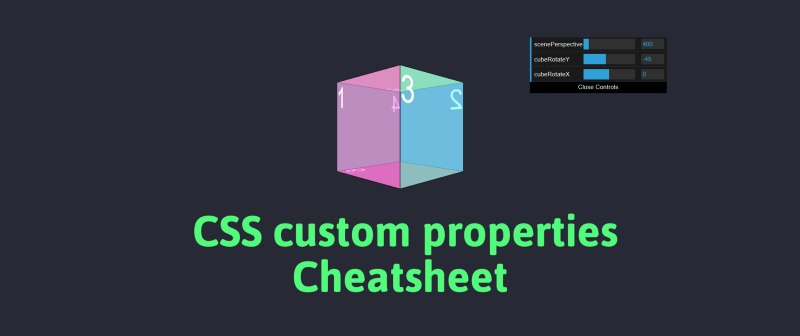By Vincent Humeau
CSS custom properties, also known as CSS variables, represent custom properties that can be declared and be called in your CSS.
Declare a custom property in CSS
To declare a Custom property in your CSS, you need to use the -- syntax:
:root { --colorPrimary: hsla(360, 100%, 74%, 0.6); }
Notice the :root pseudo-class selector — we can declare our variables globally using it. We can also declare them using other selectors, and they will then be scoped in those.
.theme-dark { --colorPrimary: hsla(360, 100%, 24%, 0.6); }
Use a custom property in CSS
To use a CSS custom property in your CSS, you can use the var() function:
:root { --colorPrimary: tomato; }
.theme-dark { --colorPrimary: lime; } body { background-color: var(--colorPrimary); }
In this case, body will have a background colour of tomato, but a body.theme-dark of lime.
Use custom properties without units
CSS custom properties can be declared without units if they are used with the calc() function.
:root { --spacing: 2; }
.container {
padding: var(--spacing) px; /*Doesn't Work ?*/
padding: calc(var(--spacing) * 1rem); /*Will output 2rem ?*/
}
Use custom properties with JavaScript
To get a custom property, we can use the following:
getComputedStyle(element).getPropertyValue("--my-var");
// Or if inline
element.style.getPropertyValue("--my-var");
To update the custom property value:
element.style.setProperty("--my-var", newVal);
Example of getting and replacing values:
In the following example, we use the dat.gui controller library to change the value of --scenePerspective, --cubeRotateY, and --cubeRotateX custom properties. This method makes it easier to apply a new style, as you do not have to apply inline style on each DOM element.
Thanks for reading!
Resources
Defining Custom Properties: the –* family of properties
Custom properties: CSS variables — MDN
Using CSS custom properties (variables) — MDN
You can read more of my articles on my blog.
